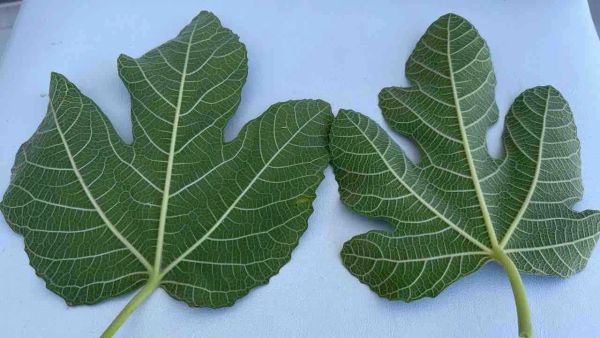
The fig tree is famous for its sweet fruit that has been enjoyed by many cultures for centuries. But did you know that the leaves of this magnificent tree hold a secret? Fig leaves are packed with nutrients and have medicinal properties that can greatly improve your well-being. In this article, we will explore the amazing health benefits of fig leaves and even provide a simple recipe for making fig leaf tea—an incredibly soothing and healthful drink.
Harness the Healing Power of Fig Leaves
For thousands of years, fig leaves have been used in traditional medicine, especially in the Mediterranean and parts of Asia. While the fig fruit is well-known for its vitamins, minerals, and antioxidants, the leaves are a hidden gem of health. They contain essential nutrients like vitamins A, B1, and B2, as well as fiber and bioactive compounds such as flavonoids and polyphenols. These compounds make fig leaves a powerful antioxidant, anti-inflammatory, and anti-diabetic agent. Let’s dive into the ten specific health benefits of fig leaves that can enhance your well-being.
1. Blood Sugar Control
Fig leaves are known for their ability to regulate blood sugar levels. Research suggests that they improve insulin sensitivity and lower blood glucose levels, making them especially beneficial for people with type 2 diabetes or those at risk of the disease. Regular consumption of fig leaf tea or extracts can significantly aid in diabetes management.
2. Cardiovascular Health
Fig leaves have a positive impact on heart health by reducing blood triglycerides and adjusting cholesterol levels. They lower LDL (bad cholesterol) and increase HDL (good cholesterol), which leads to improved heart health. By incorporating fig leaves into your diet, you can reduce the risk of cardiovascular diseases such as strokes and heart attacks.
3. Weight Management
If you’re looking to manage your weight, fig leaves can be a great ally. High in fiber, they promote satiety, reducing the urge to snack frequently. Additionally, fig leaves help regulate fat metabolism, which is beneficial for weight loss.
4. Digestive Health
The fiber content in fig leaves supports regular bowel movements and helps alleviate constipation. Their anti-inflammatory properties can also relieve gastrointestinal discomfort, making them an excellent choice for individuals with conditions like irritable bowel syndrome (IBS).
5. Skin Health
Fig leaves are rich in antioxidants like flavonoids and polyphenols, which protect the skin from oxidative stress and signs of aging, such as wrinkles and fine lines. Traditional remedies often use fig leaf extracts to address skin issues like eczema, psoriasis, and acne.
6. Bone Health
Maintaining strong bones is essential, especially as you age. Fig leaves contain calcium and magnesium, which are crucial for bone health. Regular consumption of fig leaves can help prevent osteoporosis, particularly in older adults. Their anti-inflammatory properties also support overall bone health.
7. Respiratory Health
In traditional medicine, fig leaves have been used to treat respiratory conditions like bronchitis and asthma. They act as natural expectorants, clearing mucus from the lungs and easing coughs. Drinking fig leaf tea during the cold and flu season can help alleviate respiratory symptoms.
8. Cancer Risk Reduction
The antioxidants in fig leaves may protect cells from DNA damage that can lead to cancer. Some studies also suggest that bioactive compounds in fig leaves can inhibit the growth of certain cancer cells. Incorporating fig leaves into your diet can be a preventive measure against cancer.
9. Liver Health
Supporting liver function is crucial for overall well-being. Fig leaves aid in detoxification and help reduce liver enzymes linked to inflammation and damage. Regular intake of fig leaves is particularly beneficial for those with liver issues or those exposed to toxins.
10. Ulcer and Digestive Disorder Relief
The healing properties of fig leaves make them effective in treating ulcers and other digestive disorders. They soothe the stomach lining and promote ulcer healing, alleviating symptoms like pain and indigestion.
How to Make Fig Leaf Tea
Now that you know the incredible health benefits of fig leaves, let’s explore how to make fig leaf tea—a simple and delicious way to harness their power.
Ingredients:
- 2-3 fresh or dried fig leaves
- 2 cups of water
- Honey or lemon (optional)
Instructions:
- Thoroughly wash the fig leaves to remove any dirt.
- Boil 2 cups of water, then add the fig leaves, reducing the heat to let them simmer.
- Allow the leaves to steep for 10-15 minutes.
- Strain the tea into a cup and add honey or lemon to taste if desired.
- Enjoy the tea warm, ideally daily, to experience its health benefits.
Unlock the Benefits of Fig Leaves
Fig leaves are an incredible source of health benefits that go beyond the delicious fruit. From blood sugar control and heart health to digestive wellness and skin rejuvenation, fig leaves are a true powerhouse of health. Incorporating fig leaves into your daily routine, through tea or other means, can significantly enhance your overall well-being. Share this insightful guide with your friends and family to introduce them to the natural health-enhancing properties of fig leaves. Remember, if you have any underlying health conditions, it’s always best to consult with a healthcare professional before starting any new health regimen.



